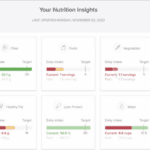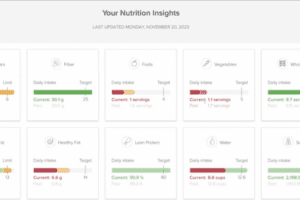The following is a guest article by Lori Jones, Chief Revenue Officer and President, Provider Market at Olive.
 Healthcare technologists are our next line of defense against COVID-19. Without them, the vaccine rollout will take years.
Healthcare technologists are our next line of defense against COVID-19. Without them, the vaccine rollout will take years.
The emergence of Americans from the grips of this pandemic relies upon the swift, effective rollout of the coronavirus vaccine. Yet its distribution has so far fallen extremely short of expectations, despite being the fastest vaccine ever developed in the West.
What we are seeing is a stark contrast between the inspiring push made by scientists and drug manufacturers to develop a vaccine in record time, followed by an incredibly inefficient rollout that’s been exacerbated by outdated technology and burdensome administrative processes.
The Biden administration has pledged 100 million vaccinations in its first 100 days. But at the current rate, some estimate it could take 18 months to vaccinate all the residents in our major cities. We can point to delayed production, but few are recognizing the enormous burden being placed on underfunded and often neglected local public health departments. They’re charged with both coordinating distribution and setting up mass vaccination sites to administer shots — and as their resources are stretched thinner than ever, this burden on them is a direct cause of the catastrophic inoculation delays.
While vaccines thus far were distributed to the states by the federal government, it has been up to the states to distribute supplies to hospitals, counties and cities, and every state has its own disparate process. This system — by design — is not centralized. The complexity of it is immense, and there needs to be better coordination and collaboration.
Leadership failures aside, technology has a critical role to play in speeding up and simplifying the process. Technology innovators — from software engineers to UX designers — are our next line of defense against COVID-19.
Here are three ways technology can help address the distribution problem:
1) Ease the burden on hospitals by automating the most burdensome administrative processes.
The vaccination process is much like an assembly line. Automakers and other manufacturers have spent years speeding up their production lines with automated processing equipment. Robots, of course, can’t give people shots. But moving people through vaccination sites more quickly starts with less manual data entry.
Some of the most burdensome administrative processes are actually what’s slowing down inoculation in many cases. Hospitals and health systems are given their allocated doses, but it can take days or weeks to organize scheduling, communicate with patients, and track who has received what dose — and who should be inoculated next.
The simple truth here is that many of these processes are being done manually by healthcare workers. Instead, they should be done by an AI workforce that can do the job more quickly and efficiently, freeing up those human workers for better, higher-level uses of their time. This sort of automation starts with booking systems and mobile apps that can make booking appointments easier — while moving patients in and out facilities faster and managing vaccine inventory so doses don’t go to waste.
Local health departments should also look to technology to streamline communication with healthcare providers. Once a citizen registers through his or her public health department online, the information should be routed to a local pharmacy or other healthcare provider that can automatically set up an appointment and electronically notify the patient of their designated time slot.
This sort of automation is already happening inside some hospitals and health systems when it comes to COVID testing. Technologists streamlined processes to better connect electronic health records, revenue cycle operations, clinical workflow systems and patient communication systems. Now, it’s time to apply the same rigor and approach to vaccines.
But, what about the hospitals and health systems that don’t have access to this kind of technology, or can’t deploy it quickly enough?
2) Create a centralized system to pinpoint the hospitals that are moving the quickest — and those that are falling behind.
In the Biden administration’s COVID-19 response overview, they outline a plan to create a more interoperable system that can track and identify disparities in vaccine distribution and response. State and local governments must be able to identify which hospitals and health systems are vaccinating patients at the highest rate — made possible by a centralized, technology-powered system. This will tell us where local health departments should direct the next rounds of supply, and therefore help to speed along the race to herd immunity.
This method would also help the federal government understand where to direct — or redirect — financial assistance or emergency support from FEMA. For the hospitals proving to be the fastest, additional funds, technology resources or personnel may allow them to increase their capacity to vaccinate citizens from surrounding areas. Conversely, the hospitals that have had the most difficulty can then benefit from boots-on-the-ground deployment of FEMA to provide auxiliary vaccination sites in the area.
Time is a critical factor as the virus continues to mutate, which may ultimately outpace vaccination efforts without an effective coordinated national effort. The lack of a more connected system, or the ability for hospitals to use a uniform effective procedure for vaccinating their population, is a liability as time drags on. It would be in the best interests for all to understand the efficiencies in the system and focus immediate utilizations on that area. This can also give other hospitals that aren’t inoculating patients as quickly additional time to enhance processes without disrupting the broader cadence of the rollout.
3) Connect disparate systems across the healthcare landscape.
It’s no secret that the pandemic has driven unprecedented technology adoption across many sectors. Healthcare is no exception. But it’s also exposed how siloed and inefficient our healthcare system can be — in large part due to lack of appropriate technology infrastructure and processes.
We need an internet of healthcare, and we need it now.
This new internet would mean systems would start talking to each other from hospital to hospital, and patients would stop filling out the same clipboard, with the same information, at every doctor’s appointment. The technology for a more connected system exists — but healthcare is only getting the scraps right now. We’ve long talked about increased interoperability in healthcare, but because the industry hasn’t digitally transformed at the rate of other sectors, it hasn’t become a true reality. The slow vaccine rollout is a direct result of these inefficiencies, and it can only be solved by rectifying them.
Our path forward in 2021 may be unclear in many ways, but one thing is certain: technologists can lead us forward in the next stage of the battle against the coronavirus. In fact, they need to. We need them because vaccination is our last line of defense against this virus and the current systems are not cooperating effectively to create an efficient rollout. The urgency for innovation cannot be underestimated. It’s time for the technology powering our healthcare systems to match the innovation and speed our scientists and pharma companies have shown.














Well if we ever get our healthcare system in order this all sounds great.